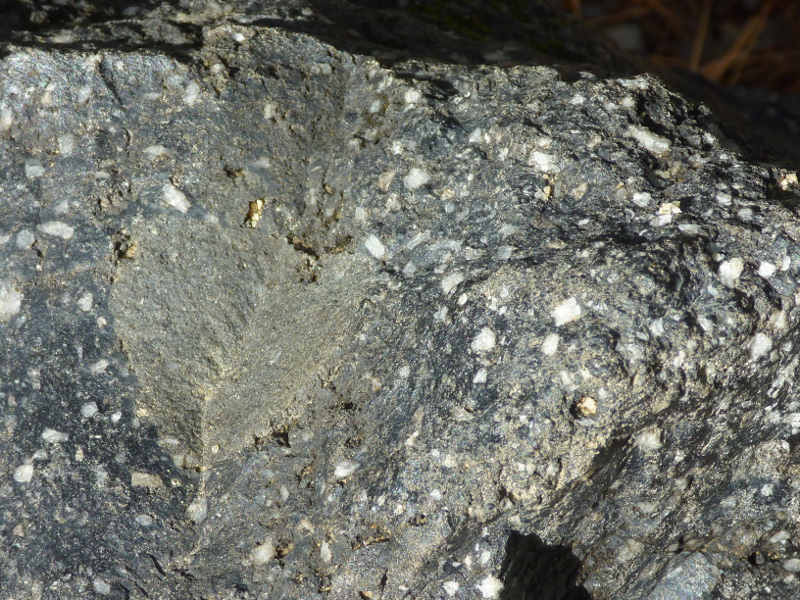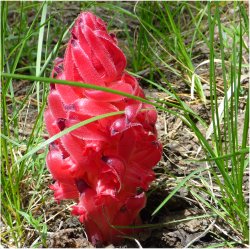
Black dacite displayed at an interpretive
exhibit of the Devasted Area Trail
This black dacite rock is displayed next
to the Devastated Area Interpretive Trail in
Lassen Volcanic National Park, California.
The exhibit panel is entitled
“New Rocks, Old Rocks.”
The “new rocks ” include this
black dacite as well as
light dacite pumice
light dacite pumice
and
banded pumice, which all formed
during eruptions of
Lassen Peak
in 1915. The panel explains:
Black dacite (black to gray in coloration) formed May 14, 1915, when lava welled up into Lassen Peak's crater, sealing it off. The lava shattered during the May 19 eruption and lava-rock fragments were carried here by an avalanche.
The May 19 event (and following ones) on Lassen Peak triggered mudflows and avalanches. A panel at a nearby exhibit says that a few cabin-size lava rocks blasted from Lassen crater and an avalanche carried them more than four miles away. They now rest as monuments throughout the Devastated Area.
Dacite is the extrusive equivalent of granodiorite [AccessScience: Dacite]. Dacite lava consistst of about 63 to 68 percent of silica, SiO2 [USGS: Dacite]. Its color is light to medium gray, but can be dark gray to black, illustrated by the lava rock shown above. When oxidized or weathered, dacite can turn reddish pink like the red dacite to the left of this black exemplar.







